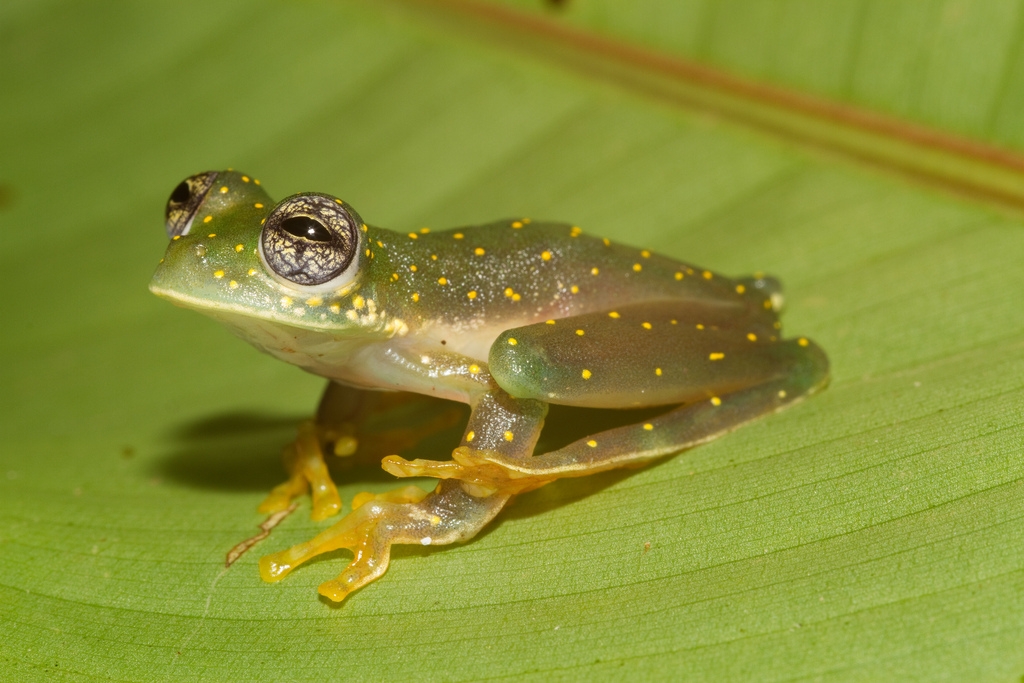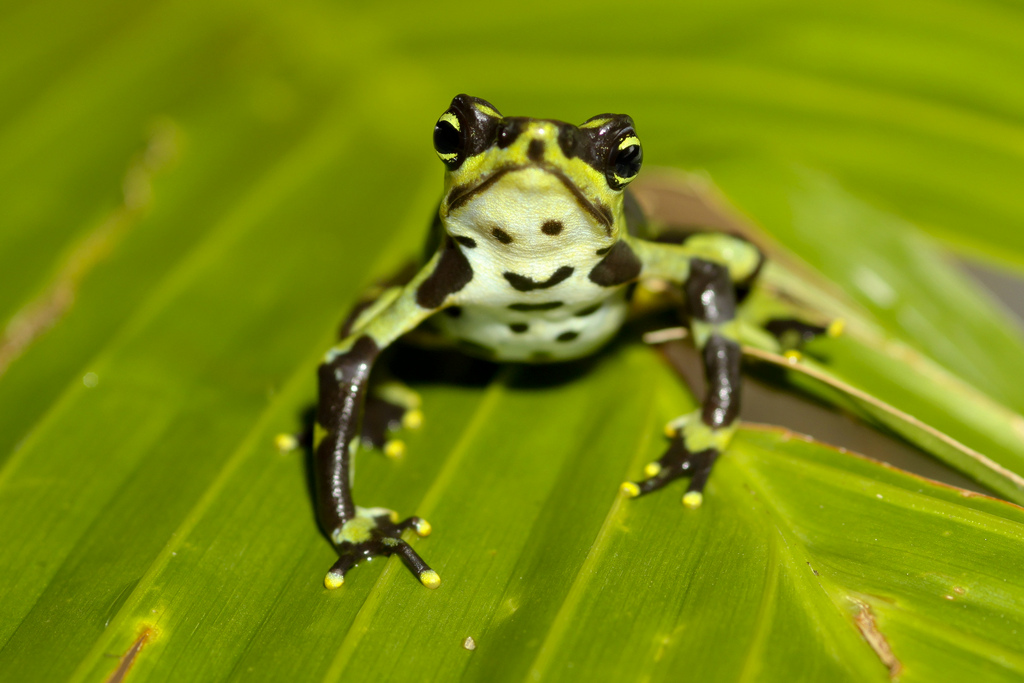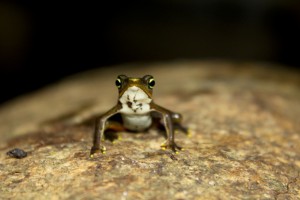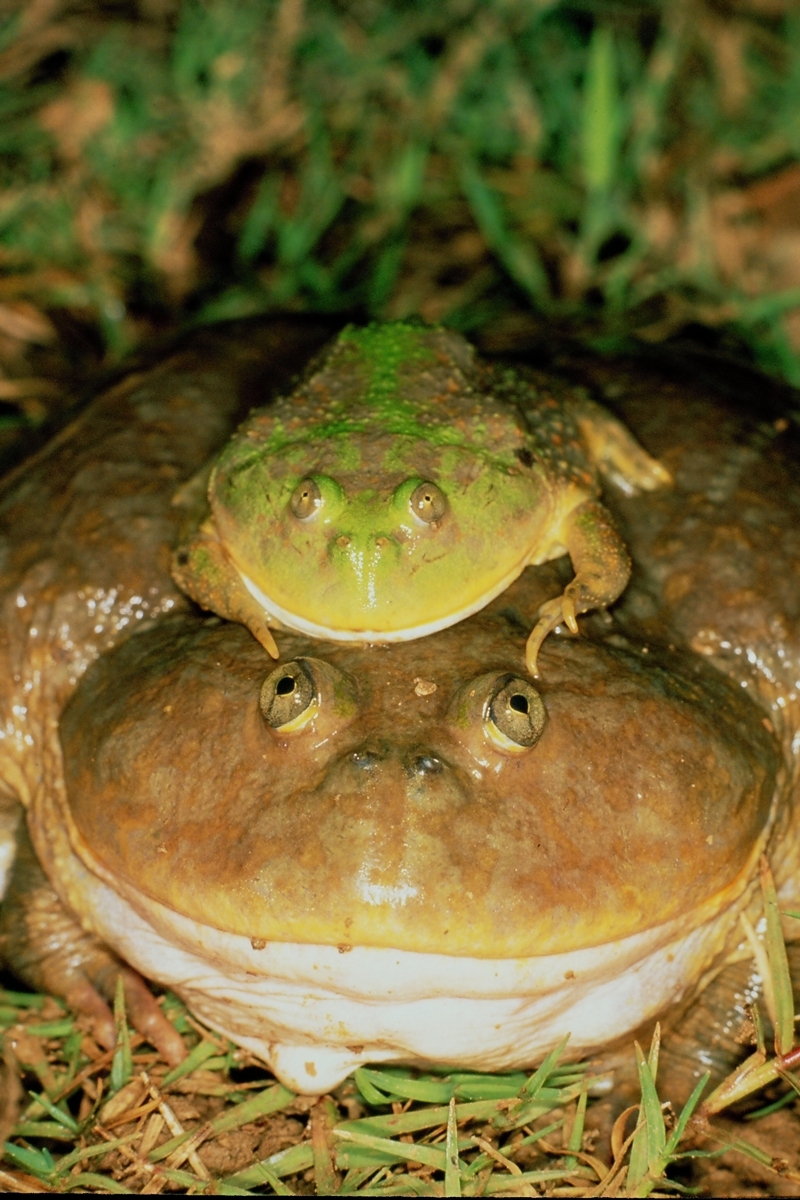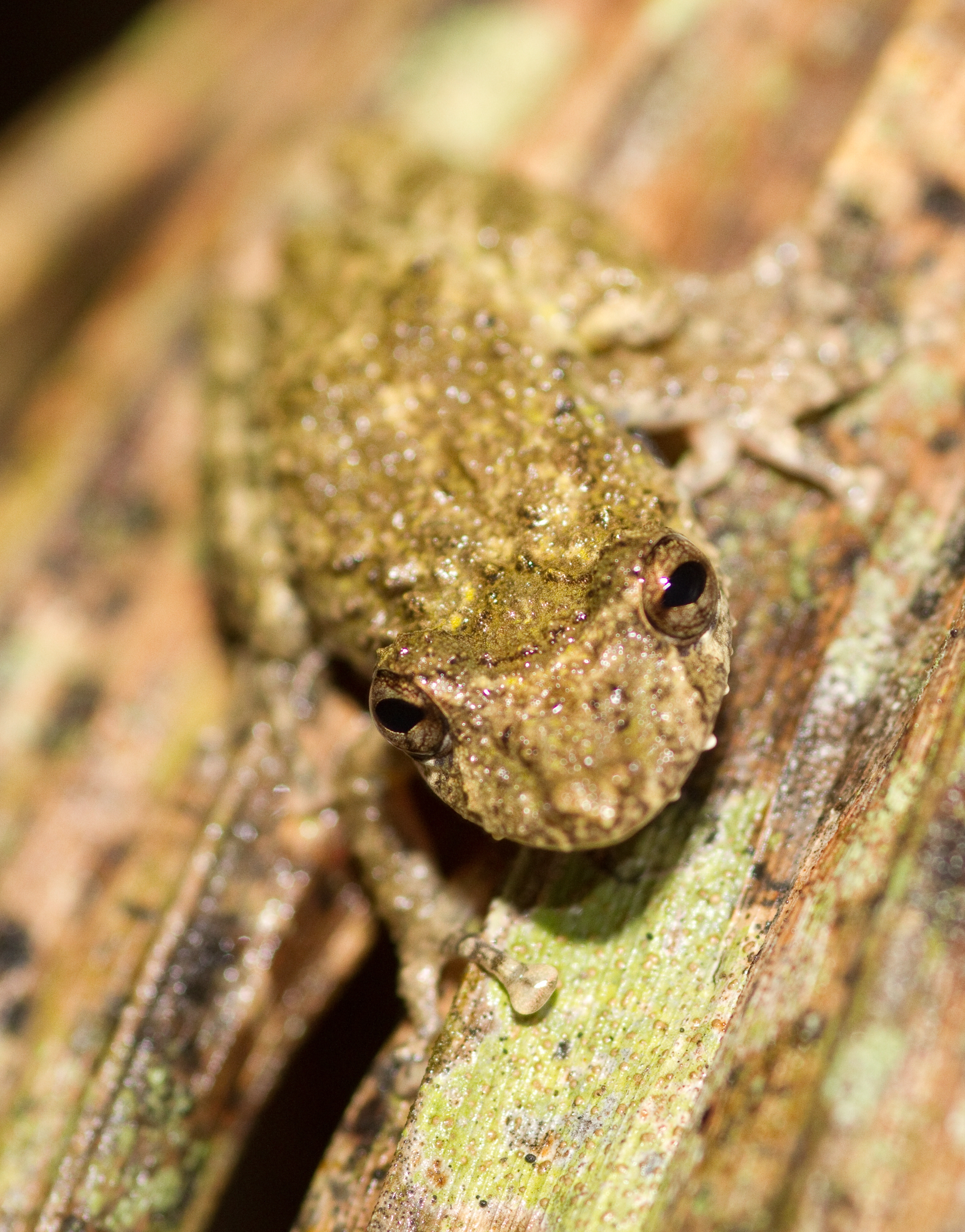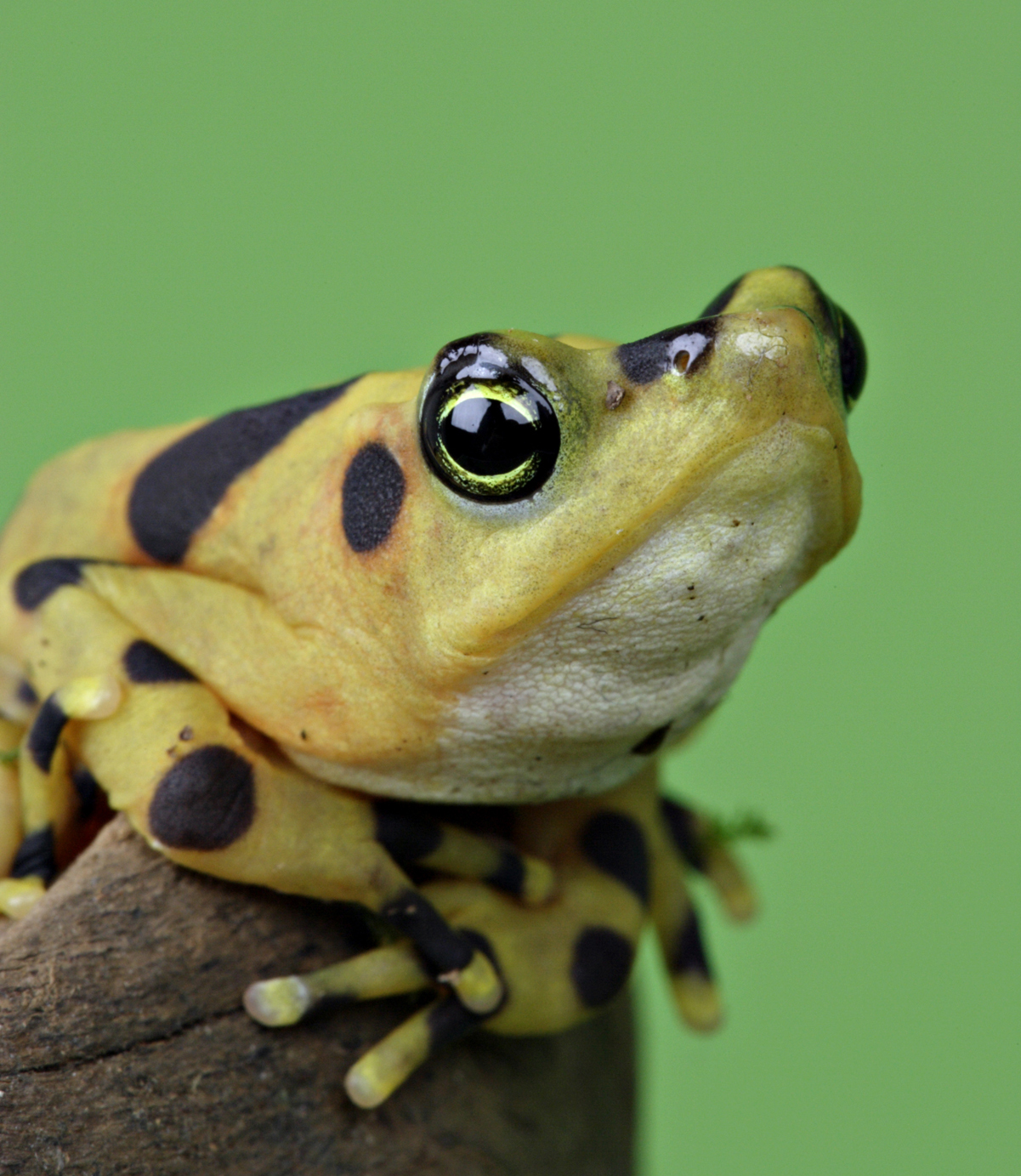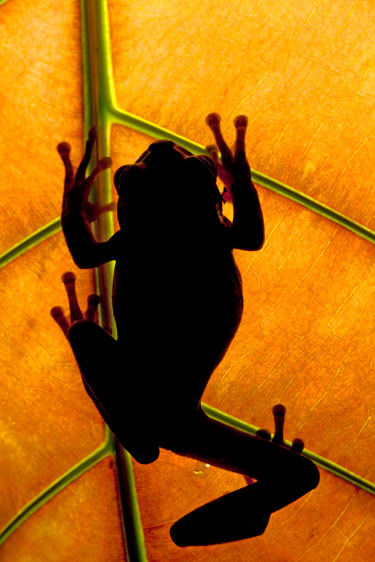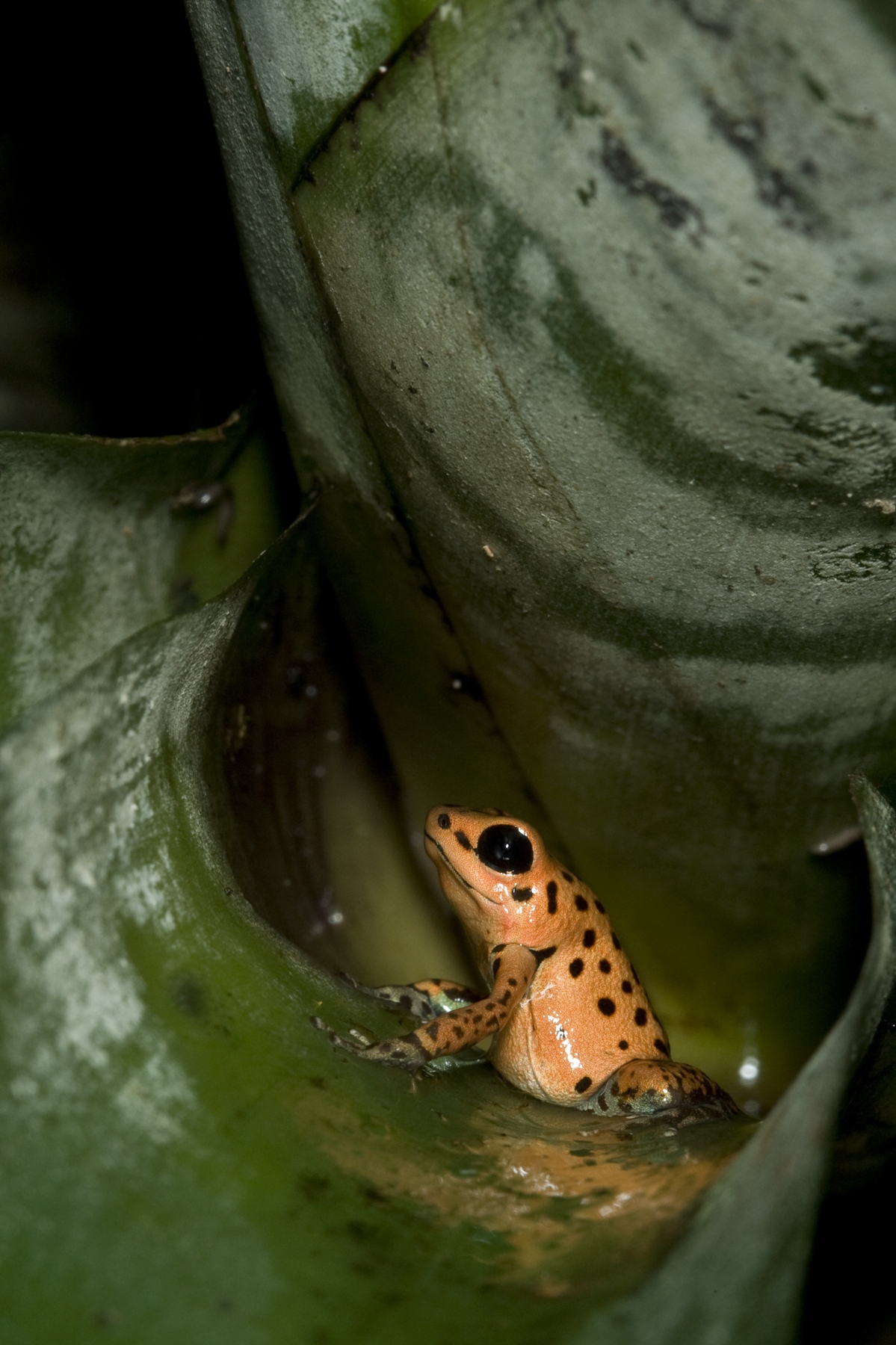Cute Frog of the Week: June 13, 2011
This sleepy-looking frog’s vibrant skin is enough to awaken anybody. The yellow-flecked glass frog (Cochranella albomaculata) lives in the lowlands of Central America and northern South America. This frog prefers the sticky humid air that hangs around elevations from sea level to 1,500 meters above sea level. Its golden brown eyes, that seem to almost pop out of its head, and glassy yellow polka-dotted skin are common sights in the forest vegetation around freshwater streams where its larvae develop.
This species is listed by the IUCN as ‘least concern’ due to its wide range, but monitoring has revealed that this species is declining rapidly in some areas due to chytridiomycosis. Therefore, this species is a priority amphibian rescue candidate species. As a species occurring in lowlands, it is probably less vulnerable to chytridiomycosis in the lowland parts of its range, but we have a lot to learn about the absolute effects of Bd in warmer lowland areas.
Photo credit: Brian Gratwicke, Panama Amphibian Rescue and Conservation Project
Every week the Panama Amphibian Rescue and Conservation Project posts a new photo of a cute frog from anywhere in the world with an interesting, fun and unique story to tell. Be sure to check back every Monday for the latest addition.
Send us your own cute frogs by uploading your photos here: http://www.flickr.com/groups/cutefrogoftheweek/

